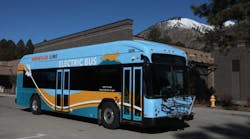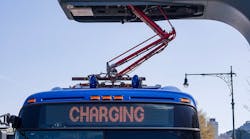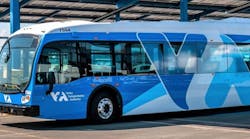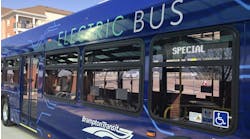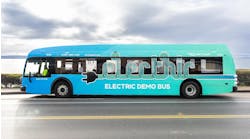Zero-emission projects are in high demand, according to a new report by Transportation for America (T4A).
T4A’s Greener Fleets: Meeting the Demand for Clean Transit examined the Low or No Emission (Low-No) and Buses and Bus Facilities grant programs and found zero-emission projects represented 95 percent of Low-No funds requested in applications in 2022, and relatively few project applications were funded. In comparison, low-emission projects made up such a small proportion of applications that nearly all applications were funded with money left over in that category.
Higher demand for zero-emission grants significantly lowered the probability of accessing zero-emission project funds. The report finds the discrepancy could incentivize transit agencies to change their clean transit plans in favor of low-emission vehicles that still pollute.
“Seeing this kind of demand for electric public transit buses shows America is ready for mass adoption, and we need to revise these programs to reflect that new reality,” said Chris Rall, outreach director for T4A. “Our number one recommendation to improve the programs is to remove the outdated and arbitrary split between zero- vs. low-emission categories to ensure 100 percent of the funds find their best use.”
U.S.-based transit fleets compete for Low No program grants to help them transition to the lowest polluting and most energy-efficient transit vehicles. Last year, the program received $1.1 billion in funding, of which 25 percent must go to low-emission buses and facilities such as diesel hybrid buses, compressed natural gas buses and fueling infrastructure. The remaining 75 percent is for using electricity and/or hydrogen as a fuel for zero-emission buses and facilities. The report finds the 75-25 percent funding split is unsustainable.
“As an industry leader in clean transit, we see Low-No funds as essential for helping transit agencies like ours transition to modern electric buses that deliver service at a lower operational cost with zero tailpipe emissions,” said Corey Aldridge, CEO and general manager of Mountain Line, which has been transitioning its fixed route fleet to be fully electric since 2017. “The data in this report is intriguing. We encourage the legislature to consider its recommendations. Updates to the program could help fleet managers access the cleanest vehicle technologies that make the most sense for them.”
Using data collected from a Freedom of Information Act request from the U.S. Department of Transportation, the T4A research team analyzed applications submitted by American transit agencies to the Low-No programs funding.
Top findings
- Overall, transit agency-requested funding exceeded awards by over 4.5 times in the combined programs. Requested zero-emissions project funding made up 86 percent of all requested funding.
- Low-emission projects in the Low-No Program were so undersubscribed every low-emission applicant received an award regardless of the project rating (Highly Recommended, Recommended, Not Recommended).
- In contrast, applicants with zero-emission projects had only a 33 percent chance of receiving any funding. In the Buses and Bus Facilites Program, their chances were even lower at 18 percent.
“Congress’s goal was not to drive a shift in demand and investment toward low-emission projects at the expense of investments in zero-emission transit,” Rall said. “This trend could lock transit agencies into more polluting technologies for decades.”
The report concludes this unbalanced dynamic creates a strong incentive for agencies to avoid applying for zero-emission projects and instead use the Low-No program to apply for funding for diesel-electric hybrid buses. Applications for low-emission projects are up for the 2023 application window.
A summary of the report’s recommendations for improving the programs:
- Eliminate the arbitrary requirement that 25 percent of Low-No funding goes to low-emission vehicles.
- Increase funding for both programs to meet the overall demand for buses and facilities and create incentives for both programs to leverage state, regional, utility and local funding to encourage applicants to propose zero-emission projects at scale and increase the return on investment.
- Reduce the matching funding requirements of Tribes and Justice40 communities.
- Increase transparency by making basic application and award information available on the Federal Transit Administration’s website.
- Simplify the application process and help agencies understand how to make their applications competitive.
“As the market of zero-emission vehicles grows and changes, so must our programs that support the transition,” Rall said. “The increased demand for zero-emission projects is a good thing. We can update these programs to make them better for transit agencies that want to save money and clean up their air.”
“The Champaign-Urbana Mass Transit District has stepped out as a leader in transitioning to zero- emission vehicles. Our hydrogen fuel cell electric buses run on hydrogen that we produce on-site utilizing 100 percent renewable solar energy, said Karl Gnadt, managing director for Champaign-Urbana Mass Transit District. “The remainder of our fleet is made up completely of hybrid buses, so we have long appreciated the value of low emission vehicles as well. However, as zero-emission technologies advance, we believe it is time to focus on a national transition to zero-emission buses. Removing the dedicated low emission set aside within the Low-No Grant Program will allow the program to be more responsive to transit’s needs.”
The full report can be found on T4A’s website.

